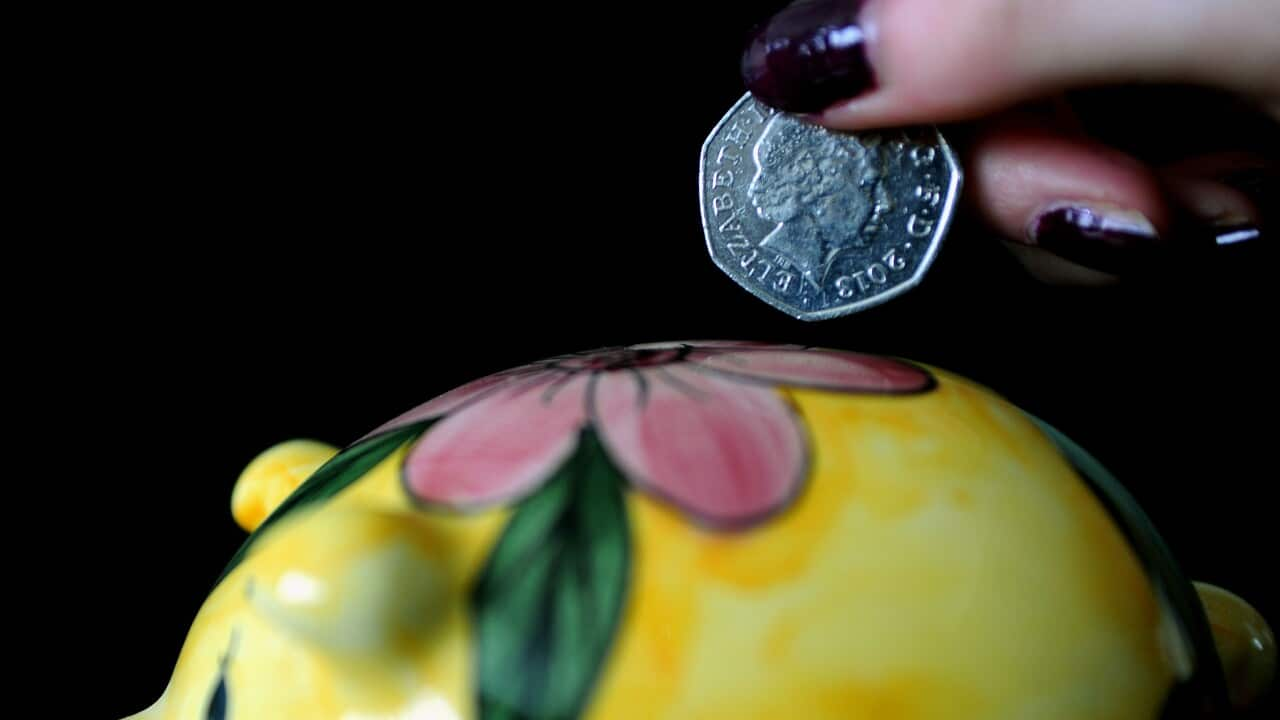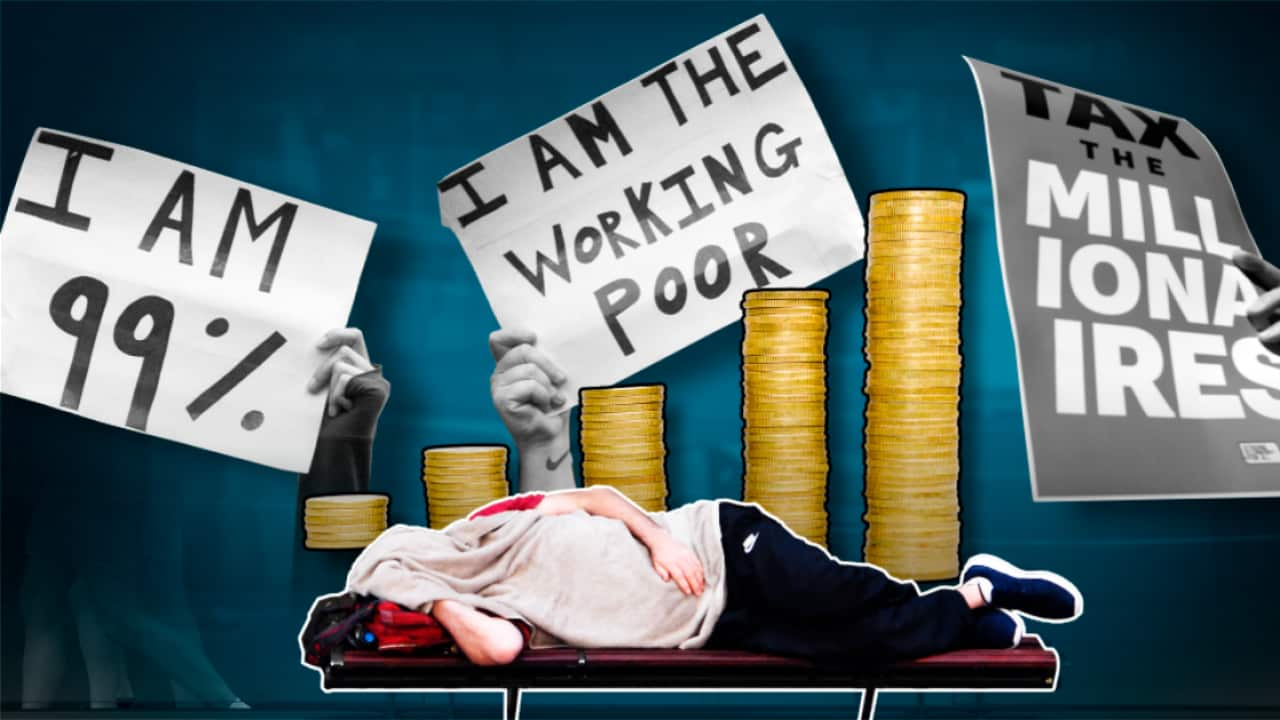Key Points
- The household savings ratio is at a 17-year low.
- Economists explain how saving habits have changed over the decades and who is currently feeling the squeeze.
- There's a growing divide between young and older Australians, with the current economic climate "rewarding those with financial assets".
For every $100 that an Australian makes, they put away 60 cents for a rainy day.
The national savings ratio is at its lowest level since 2007, according to the Australian Bureau of Statistics' National Accounts, which summarise key economic components and events.
The June figures released on Wednesday also show Australia's GDP per capita has been down for six consecutive quarters.
Economist Stephen Bartos, a professor at the University of Canberra, told SBS News it shows that Australia's "economy is only barely keeping its head above water".
So which Australians are increasingly feeling the squeeze?
How have our savings habits changed?
Bartos said the savings ratio, which remained at 0.6 per cent for the June quarter, tracks how households are spending or saving money.
University of Newcastle economics professor Bill Mitchell said our rate hasn't always been this low, with household savings reaching roughly 16 per cent during the 1970s.
That's $16 of every $100 earned, once you've been taxed, instead of today's 60 cents.
Mitchell said these levels took a dive in the 1990s as financial deregulation led to households taking on significant debt during a period of consecutive government surpluses.
"The savings ratio started to plummet," he told SBS News.
"And by the time we hit the global financial crisis, the saving ratio had gone negative."
During the pandemic, there was a rise in saving levels as people became increasingly cautious about what they spent their money on, but it has been on a drastic decline since.
Can't save? You're not alone
With the ratio "heading towards zero" and household expenditure at -0.2 per cent, Mitchell said it's clear Australians are increasingly dipping into their savings.
"For lower income groups, they are dissaving for sure and funding their spending with their credit cards, which is totally unsustainable," he said.
"They're maintaining that state by … going into increasing debt. And we've seen that every time that saving ratio is low, household debt in aggregate increases."

"So young people, people without financial wealth, they're doing it really tough. Also, single women, particularly those above 50 who have encountered divorce.
"If [a family] has got a mortgage, the first thing they're going to do is try to protect their housing loan, which means that then they've got to cut back on food, expenditures, holidays. We're already seeing cutbacks this quarter in travel school excursions for children, clothing replacements, all of those things go."
Illion, a credit bureau, said its latest Consumer Credit Stress Barometer indicated that an increasing amount of Australians are at risk of defaulting on their credit.
For Australians under 50, this risk has risen by 2 per cent in the June quarter. Those over 50, who have been typically shielded from economic peaks and troughs, have seen their risk increase by more than 4 per cent.
What do the figures say about the state of our economy?
Wednesday's data revealed that while consumer spending was going backwards, Australia's economy grew 0.2 per cent in the June quarter.
Treasurer Jim Chalmers defended the federal government's strategy by pointing the finger at interest rate hikes, set by the Reserve Bank.
He said they have been "smashing" the economy.
"If you look at the way our economy is slowing and the particular pressures on our economy, it is a combination of global economic uncertainty, persistent but moderating inflation and higher interest rates and I don’t think that is an especially controversial point to make," he told reporters.
As the government continues to grapple with how best to fight inflation, which slowed to 3.5 per cent in in the year to July, Bartos warned against cutting government spending.
"So it's a really difficult balancing act. If government tries to address inflation by cutting spending, it will cause a recession."












